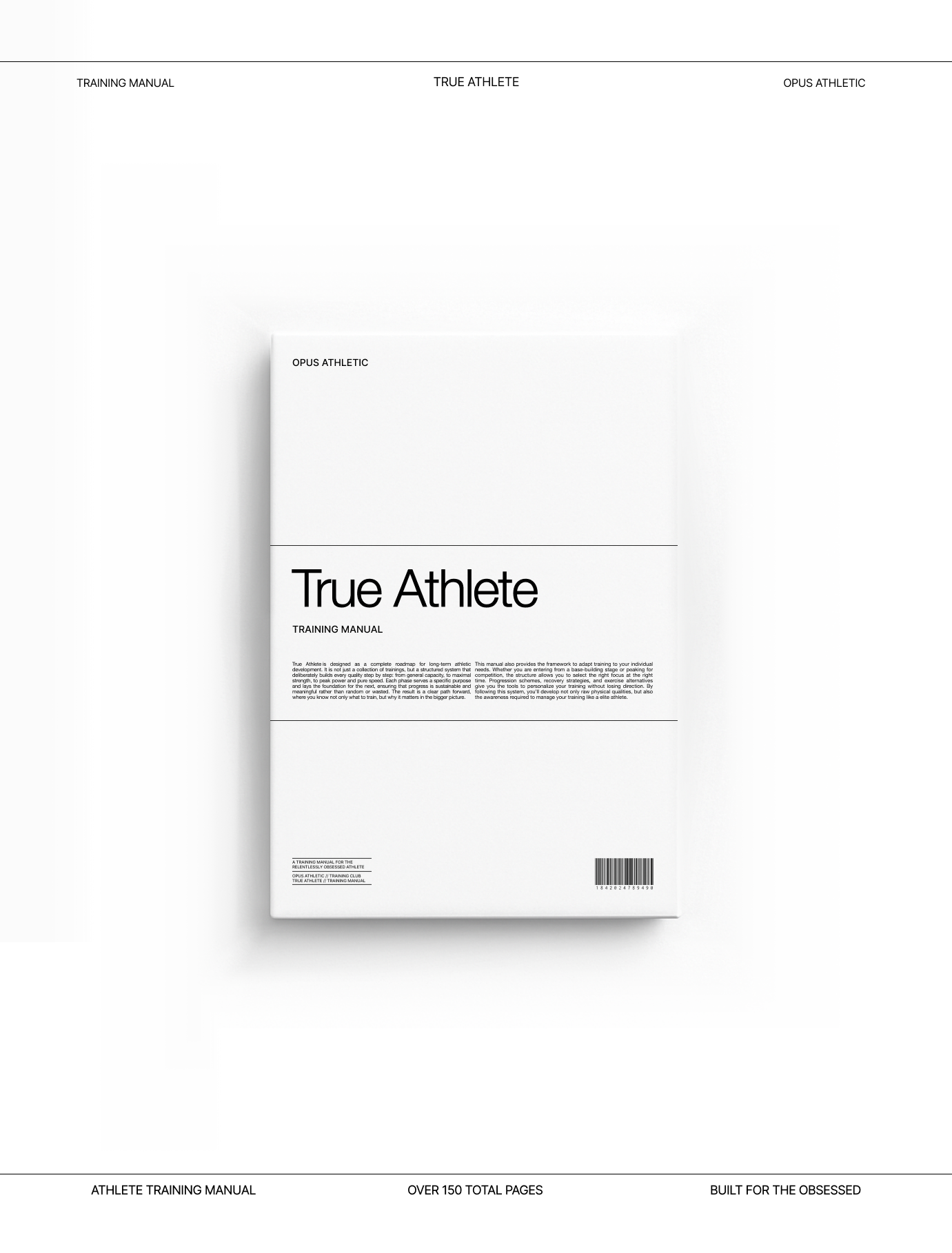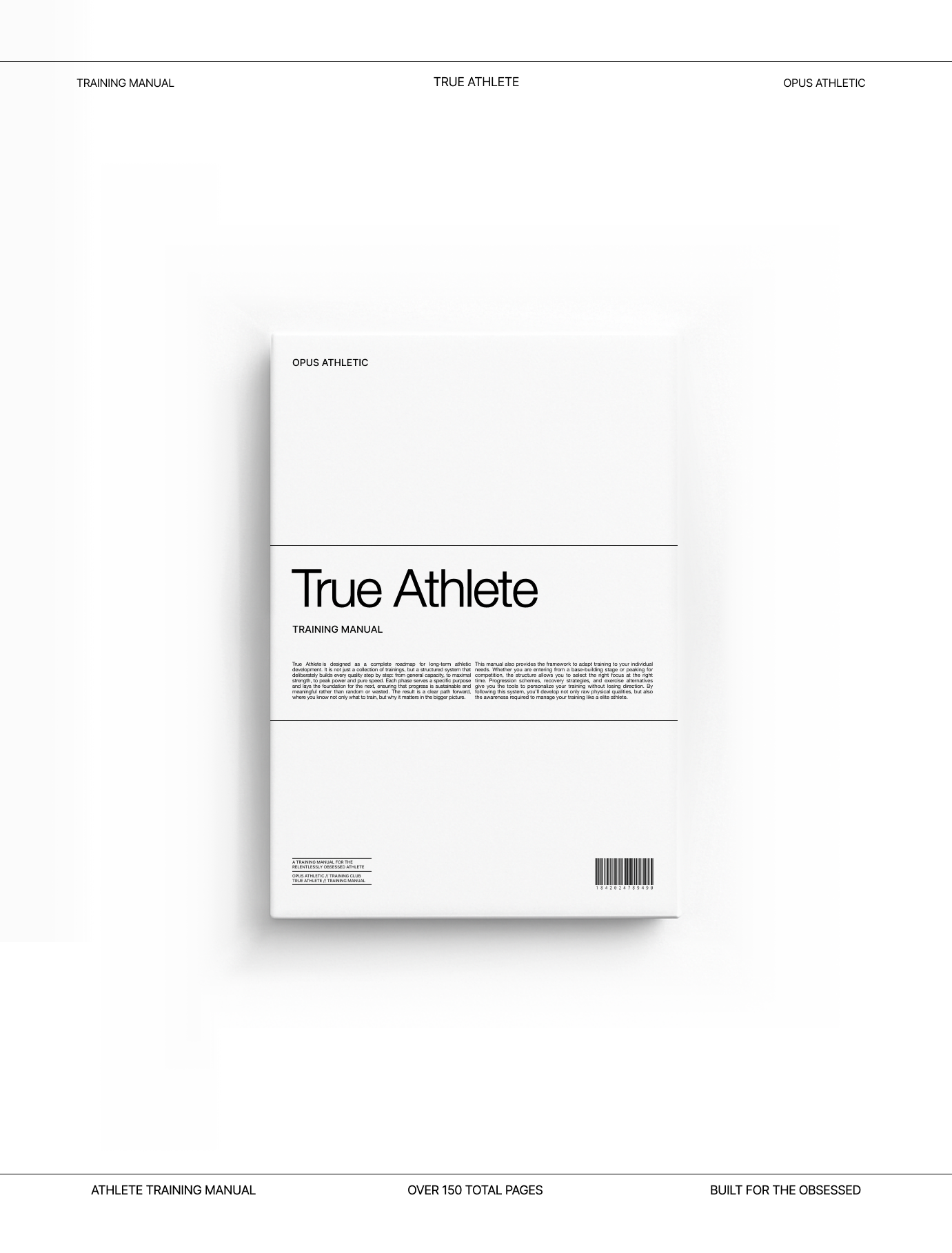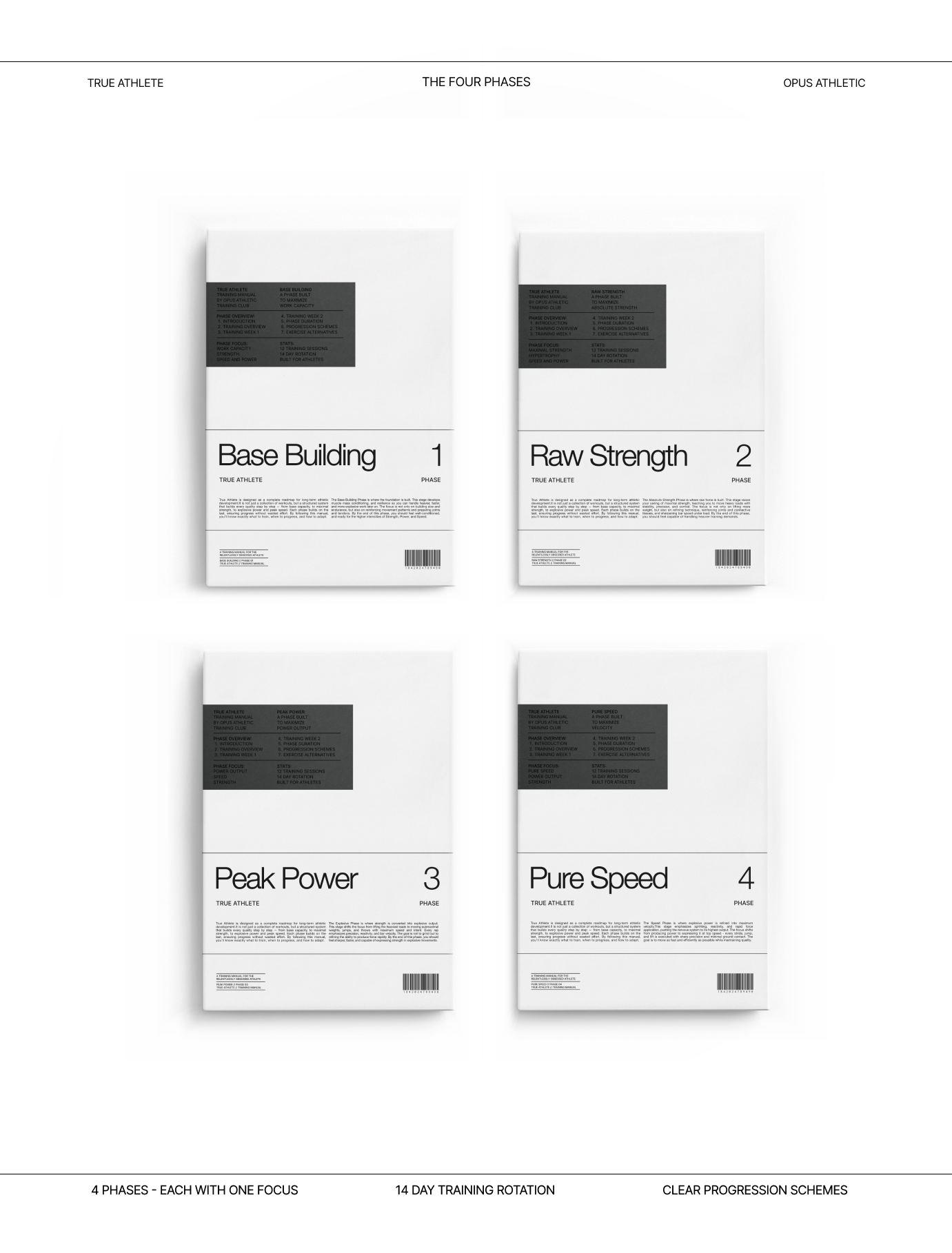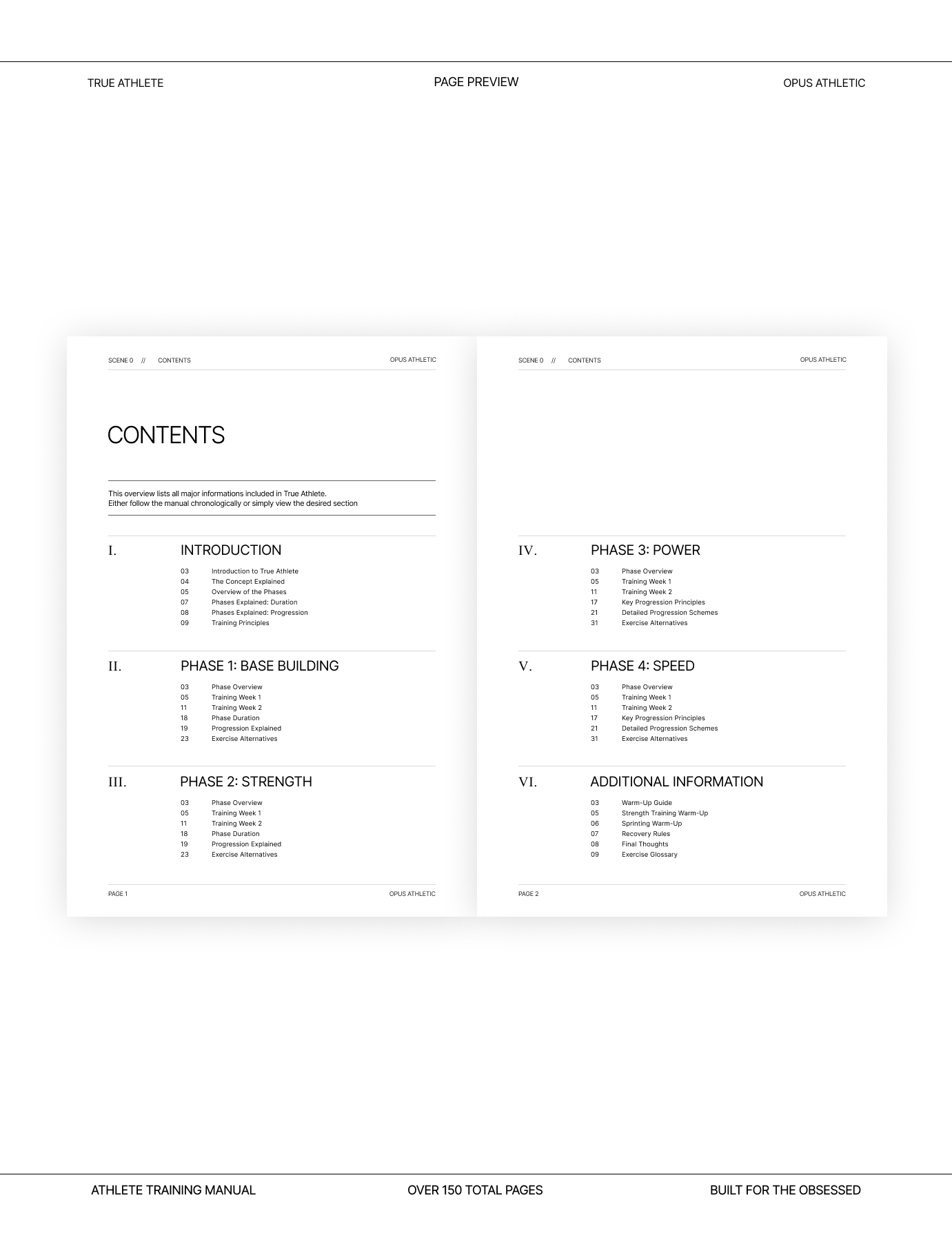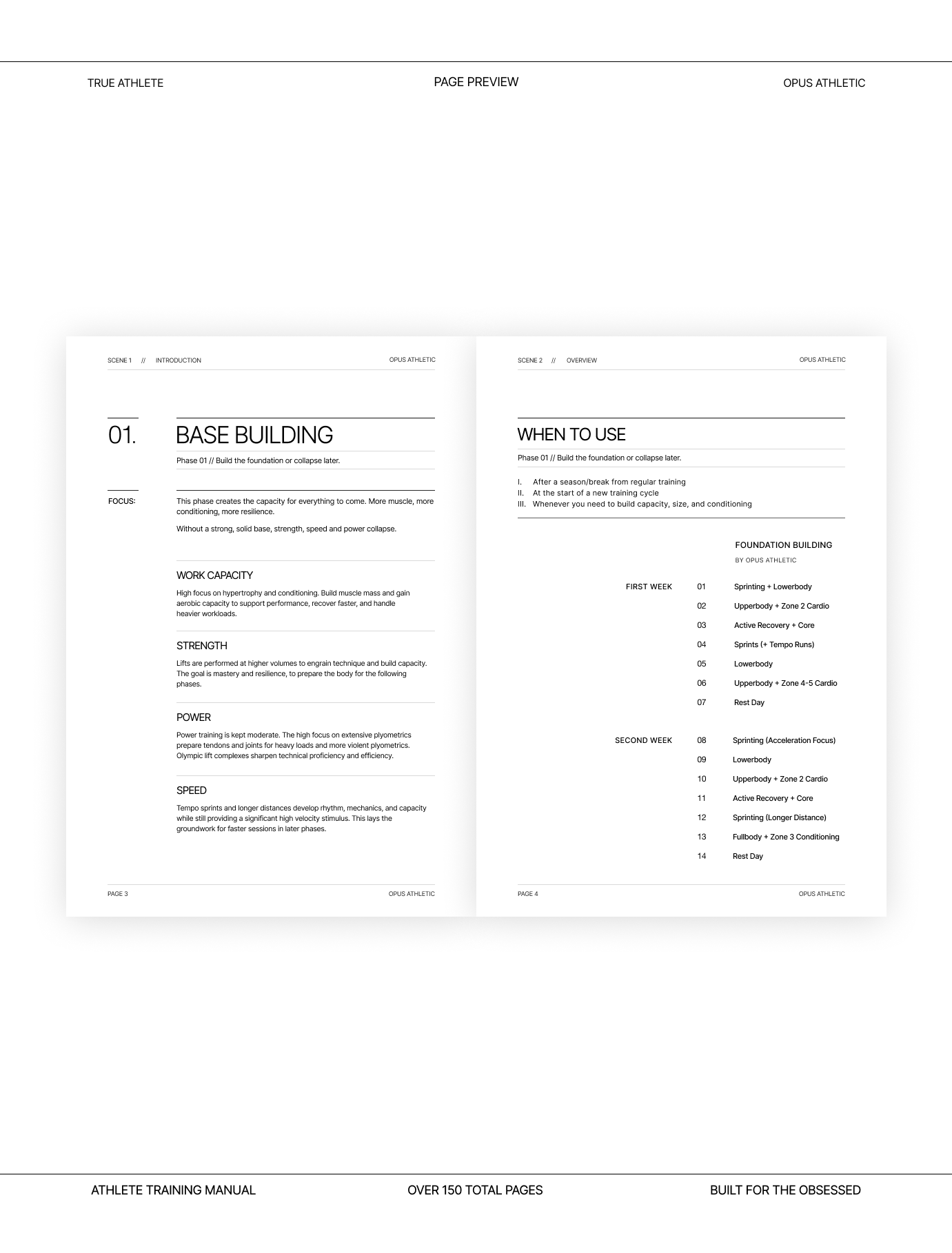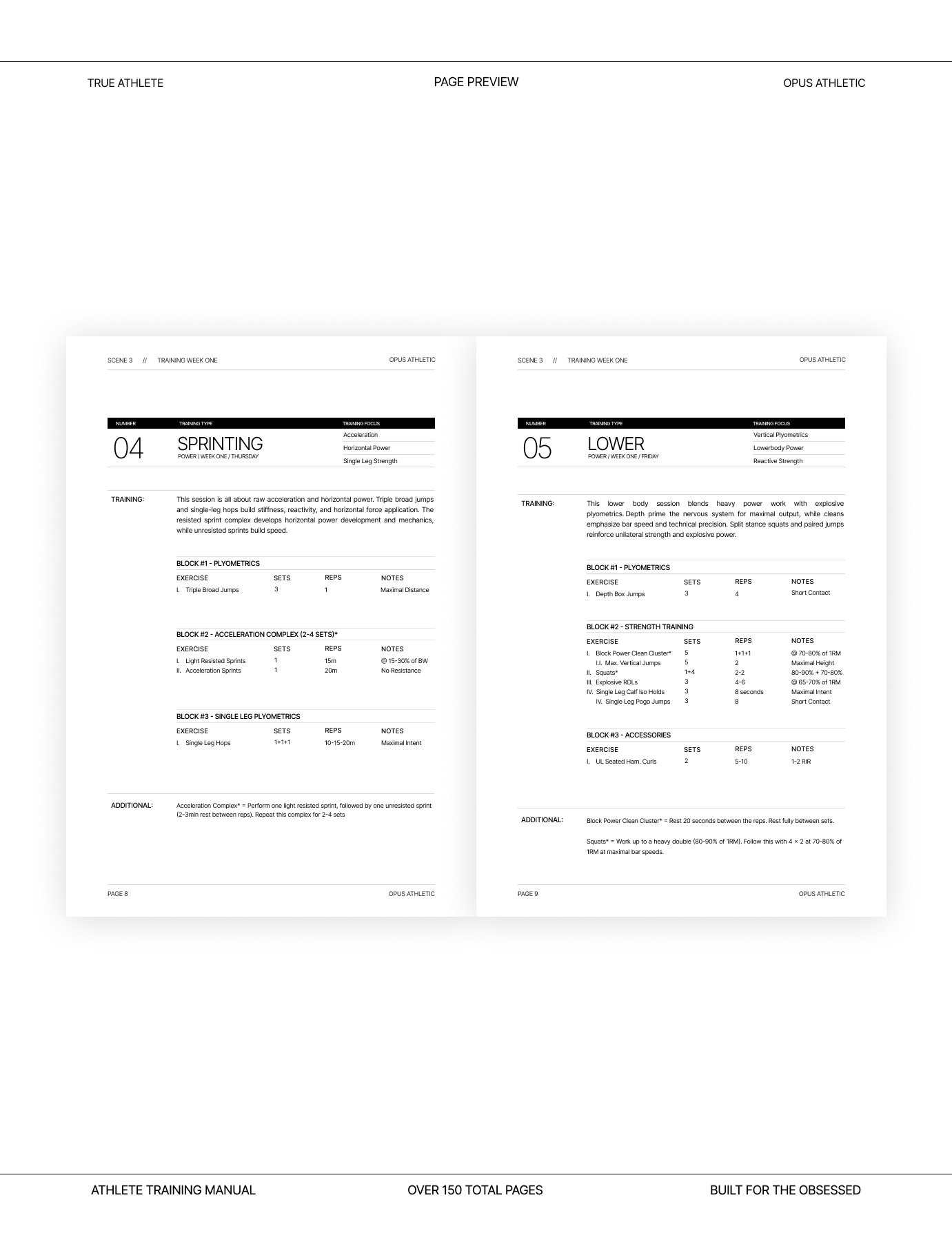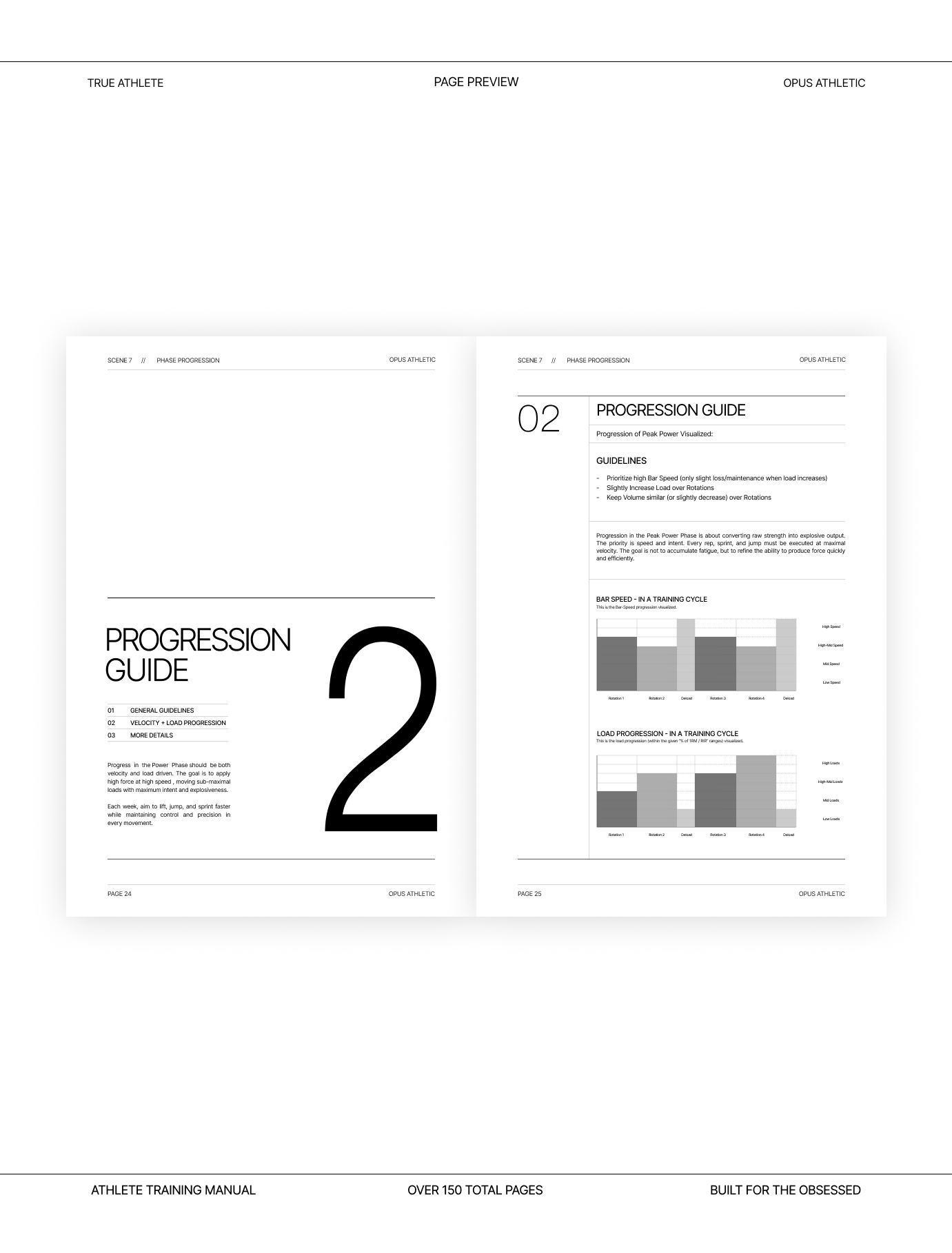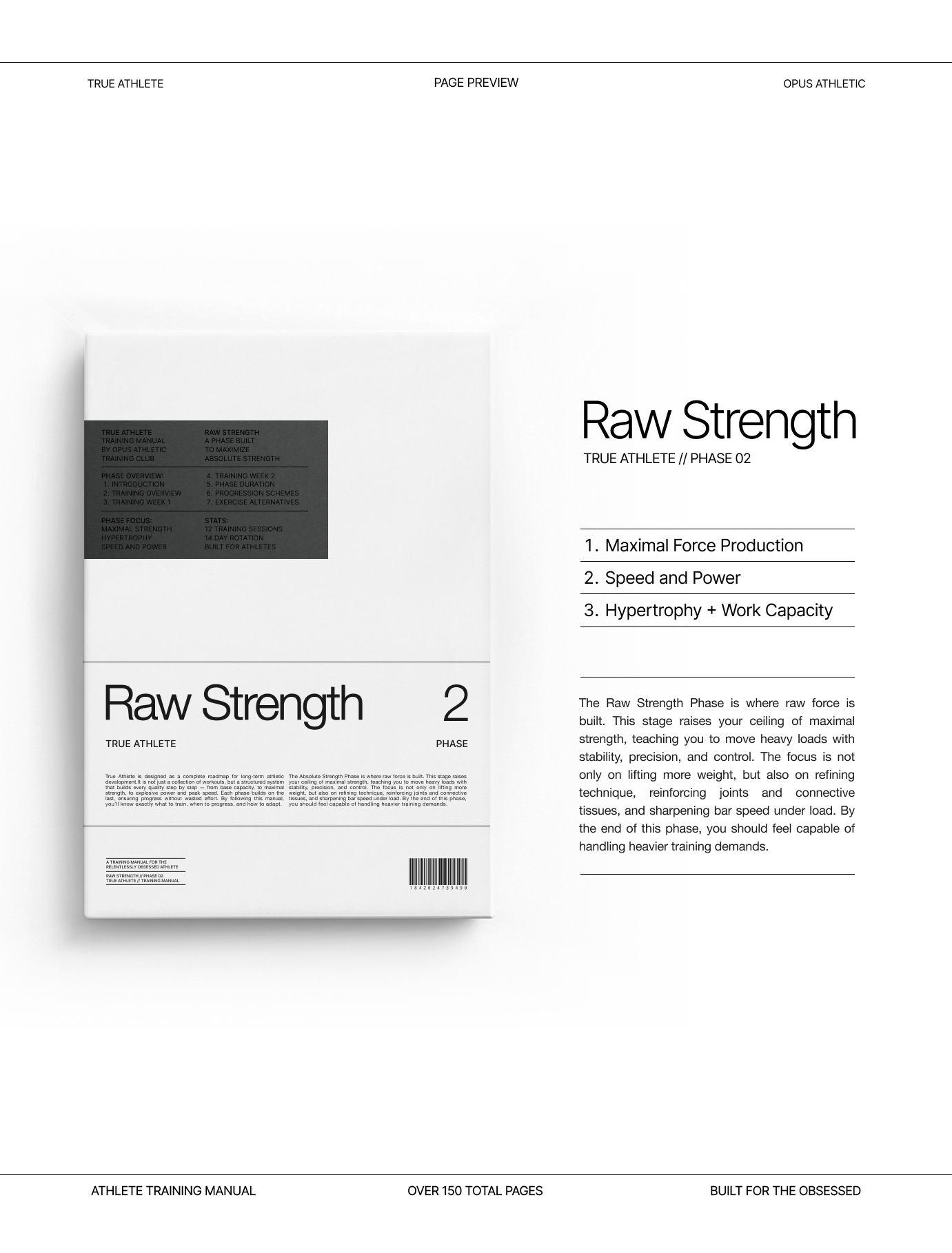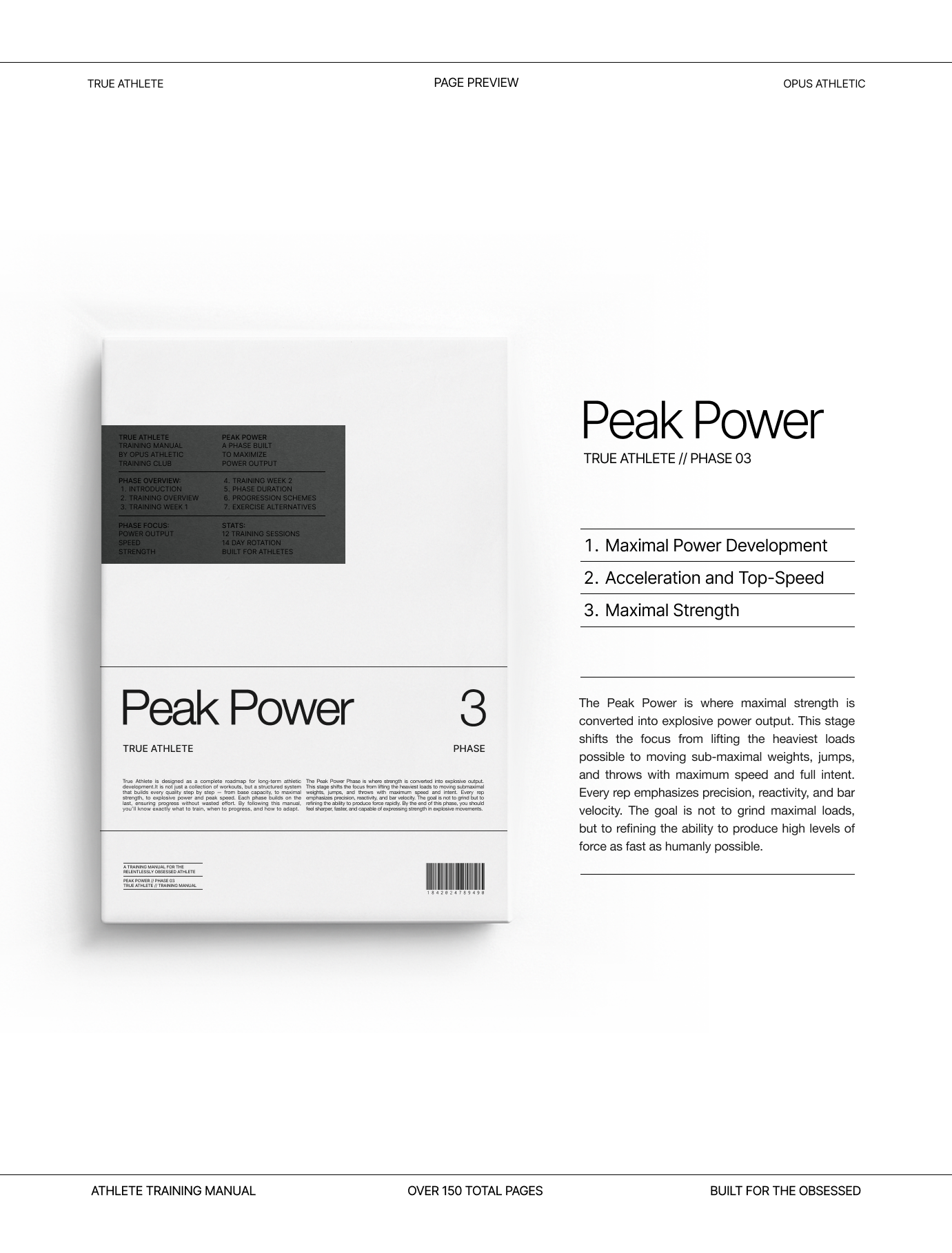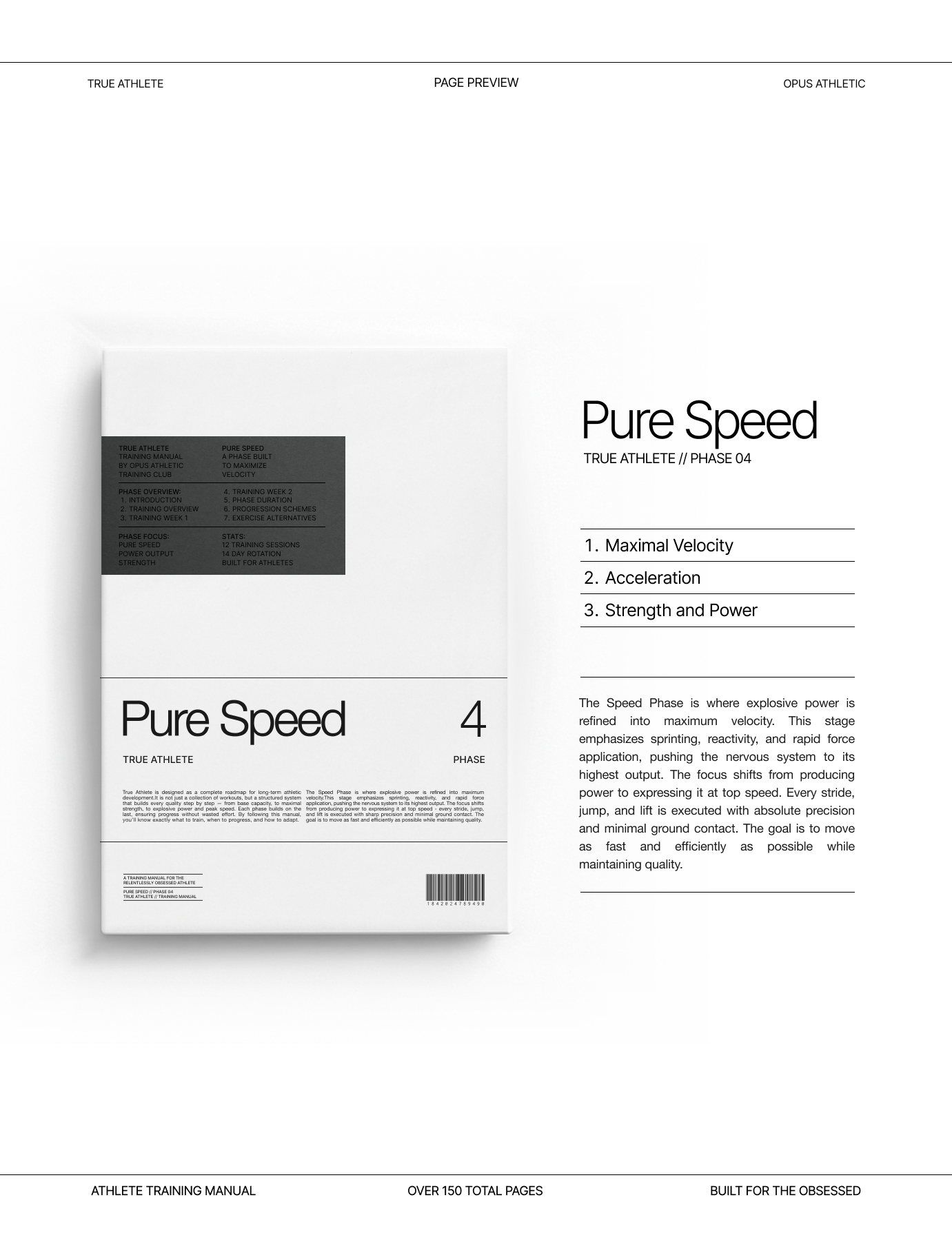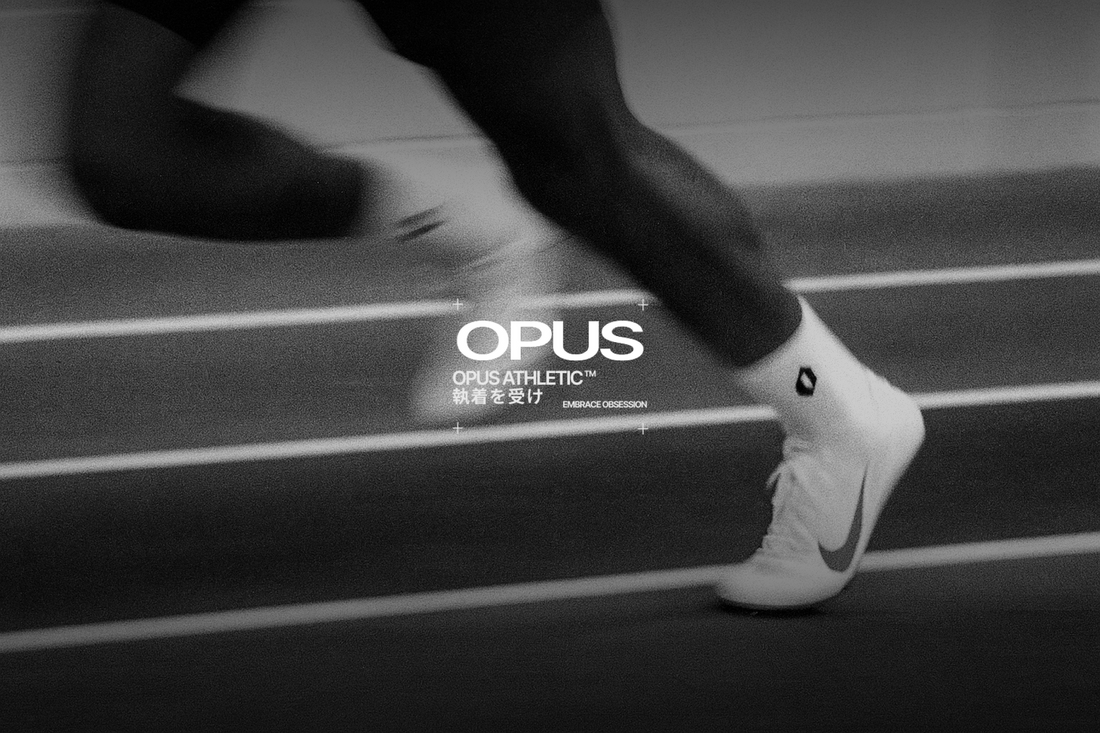
Athlete Speed and Power Training Session
Blog Post
OPUS TRAINING CLUB
28th August 2025 – Athlete Training
Built for Athletes
Speed + Power
Block #1 – Plyometrics
-
Pogo Jumps – 3 sets x 10m (Warm Up / Ankle Prep)
-
Single Leg Pogo Jumps – 2 sets x 10m (Fast Ground Contact)
-
Single Leg Hops – 3 sets x 20m (Maximal Distance)
Rest: 2–3 min
Block #2 – Acceleration Complex
-
Heavy Resisted Sprints – 1 set x 10m (40–60% BW)
-
Light Resisted Sprints – 1 set x 15m (15–30% BW)
-
Acceleration Sprints – 1 set x 20m (Bodyweight)
-
-
Start with Heavy Resisted Sprints - into Light Resisted Sprints - into normal acceleration sprints
Repeat Block 2–3 times
Rest: 2-4 minutes between Reps + 3–5 min between Sets
Block #3 – Power
-
Block Power Cleans – 4 sets x 2 reps (@ 75–85% of 1RM)
-
Box Squats – 3 sets x 5 reps (@ 80%+ of 1RM)
Rest: 4–6 min
Block #4 – Accessories
-
Seated Hamstring Curls – 2 sets x 4–10 reps (0–1 Reps in Reserve)
-
Calf Raises – 2 sets x 4–10 reps (0–1 Reps in Reserve)
Rest: 2–5 min
Training Principles
-
Explosive intent: Each sprint, jump, and lift is performed with maximum effort for optimal transfer to sport.
-
Load variation: Combining heavy resisted sprints, light resisted sprints, and bodyweight acceleration ensures both strength and speed adaptation.
-
Strength transfer: Block cleans and box squats target explosive strength under load, critical for acceleration and power.
-
Accessory balance: Hamstring and calf development support sprint mechanics and long-term durability.
Rest periods are a key component of this program. Structured recovery ensures athletes can repeat efforts at high intensity, maintain proper mechanics, and maximize adaptation.

